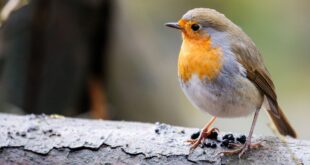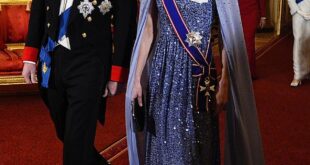By David Hartwig
A set of 12 stamps issued March 12 by Great Britain’s Royal Mail features creatures who lived in the age of the dinosaurs and honors a pioneering figure in paleontology.
Stamps in four se-tenant (side-by-side) pairs depict dinosaurs and other prehistoric reptiles from the Jurassic and Cretaceous eras (201.3 to 66 million years ago).
The stamps in two pairs are valued at the first-class rate (currently £1.25), and the stamps in the remaining two pairs are denominated £2 (the international economy rate for letters up to 100 grams).
A souvenir sheet includes four additional first-class stamps in a tribute to Mary Anning (1799-1847), an early professional fossil hunter whose discoveries included the fossilized skeletons of ichthyosaurs, plesiosaurs and pterosaurs on the Dorset coast of England near her home in Lyme Regis.
One of the stamps in the souvenir sheet shows a painting of Anning. The other three show fossils she discovered.
All 12 stamps in Royal Mail’s Age of the Dinosaur issue provide the name of the subject starting in a corner on either the right or left side of the stamp. The text on the stamps in the se-tenant pairs runs vertically, and the text on the stamps in the souvenir sheet runs horizontally.
The silhouette of King Charles III and the stamp’s denomination appear in a top corner on all of the stamps.
The Natural History Museum in London partnered with Royal Mail in the creation of the stamps, using scientists from no less than six different specialties within the field of paleontology.
Experts at the National History Museum also assisted with the presentation pack included with the issue. The presentation pack provides more insight into the species depicted on the stamps with facts and statistics. All 12 stamps are included in the presentation pack.
The group of reptiles referred to as dinosaurs thrived all around the world for nearly 180 million years, appearing roughly 245 million years ago and mostly dying out about 66 million years ago, around the same time an asteroid struck Earth.
Reptiles in the genus Tyrannosaurus, as pictured on a first-class stamp in the set of eight, died out with most other dinosaurs 66 million years ago.
The stamp paired with the Tyrannosaurus stamp shows a member of the genus Triceratops, which lived around 68 million years ago along with Tyrannosaurus.
The other pair of first-class stamps shows an airborne member of the genus Coloborhynchus and a representative of the genus Iguanodon. Both reptiles lived in the early Cretaceous period (145 million to 100.5 million years ago).
According to information in the presentation pack, the Cretaceous period brought more diversity to dinosaurs due to the continent separation that allowed dinosaurs to evolve independently in different parts of the world.
The £2 stamps in one pair show members of the genera Stegosaurus and Diplodocus, both of which lived during the late Jurassic period (about 161 million to 145 million years ago).
Members of the Megalosaurus genus, shown on a £2 stamp in the remaining se-tenant pair, lived throughout the Jurassic period, and members of the Cryptoclidus genus swam Earth’s waters during the middle Jurassic period (174.1 million to 163.5 million years ago).
The Jurassic period began around 201 million years ago, when a mass extinction allowed dinosaurs to evolve and increase in number, according to the presentation pack.
Some of the fossils discovered by Anning during the first half of the 1800s are dated closer to the beginning of the Jurassic period, tens of millions of years older than any of the reptiles depicted on stamps in the set of eight.
Three of the stamps in the souvenir sheet show fossils found by Anning: an ichthyosaurus dated to 201-198 million years ago, a dapedium dated to 199-190 million years ago and a plesiosaurus dated to 201-198 million years ago.
The stamps in the souvenir sheet are presented within …
To continue reading this story, subscribe to Linn’s Stamp News.
Connect with Linn’s Stamp News:
Sign up for our newsletter
Like us on Facebook
Follow us on Twitter



